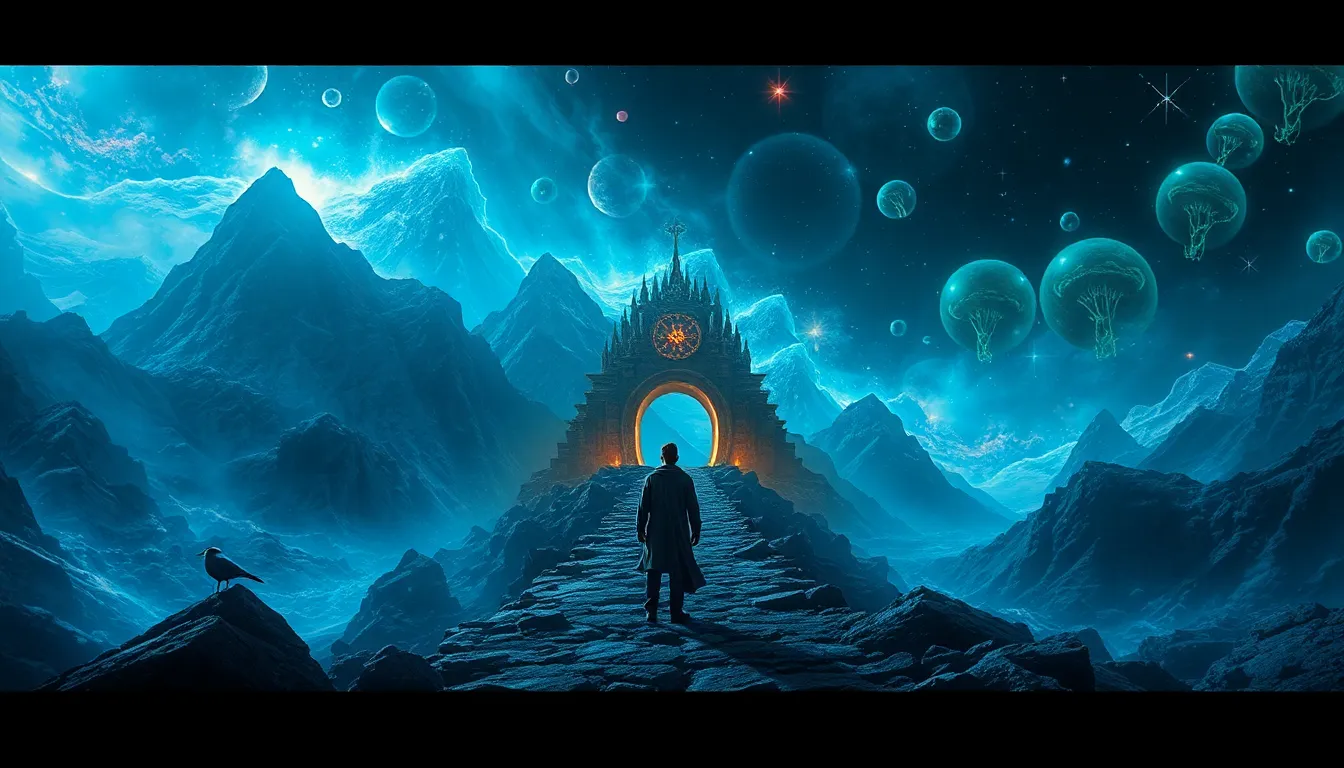The Journey Beyond: Myths of Otherworldly Adventures
Introduction to Otherworldly Adventures
Otherworldly adventures encompass journeys that transcend the ordinary realm, often venturing into mystical dimensions or alternate realities. These narratives not only entertain but also provoke thought about existence, spirituality, and the unknown. Myths play a crucial role in shaping cultural perceptions of the unknown, acting as bridges that connect human experiences with the vastness of the universe.
Historical Context of Otherworldly Myths
Throughout history, ancient civilizations have crafted rich tapestries of myths that reflect their understanding of the cosmos. From the epic tales of Gilgamesh in Mesopotamia to the intricate stories of gods and heroes in Greek mythology, these narratives served not only as entertainment but also as frameworks for understanding the world. Myths provided answers to existential questions, illuminating the relationship between the earthly and the divine.
Common Themes in Otherworldly Myths
Across cultures, several recurring themes emerge in the fabric of otherworldly myths:
- Transformation: Many heroes undergo profound changes, symbolizing personal growth and enlightenment.
- Trials: Journeys often involve overcoming obstacles, tests of courage, and moral dilemmas.
- The Hero’s Journey: A narrative structure that involves a hero who ventures out, faces challenges, and returns transformed.
These themes often carry symbolic meanings associated with various realms and dimensions, suggesting that the journey beyond is both a literal and metaphorical exploration of the self.
Cultural Interpretations of the Afterlife
Different cultures offer unique perspectives on the afterlife, shaping their narratives of otherworldly adventures:
- Egyptian Mythology: The concept of the afterlife involved a journey through the Duat, where souls faced trials to reach the Field of Reeds.
- Greek Mythology: The Underworld, ruled by Hades, was a realm where souls encountered judgment and could find rest or punishment.
- Native American Beliefs: Many tribes view the afterlife as a continuation of life, emphasizing harmony with nature and ancestral spirits.
These beliefs not only influence individual narratives but also cultivate a collective understanding of existence beyond death.
Mythical Creatures and Their Significance
Mythical creatures often inhabit the realms of otherworldly adventures, each serving distinctive roles:
- Fairies: Often seen as guides or tricksters, they embody the mysteries of nature and the supernatural.
- Demons: Represent challenges and fears, acting as obstacles in the hero’s journey.
- Extraterrestrials: Modern myths often include beings from other planets, reflecting humanity’s curiosity about life beyond Earth.
These beings can either aid or hinder adventurers, emphasizing the duality of existence and the complexities of the unknown.
The Role of Nature in Otherworldly Myths
Nature plays a critical role in otherworldly myths, often depicted as a character in its own right. Symbolic landscapes such as:
- Forests: Represent the unknown and are often gateways to other realms.
- Mountains: Symbolize challenges and the pursuit of enlightenment.
- Oceans: Embody the vastness of the unconscious and the depths of mystery.
These natural elements enrich the narrative, creating a vivid backdrop for the journey beyond.
Modern Adaptations of Otherworldly Myths
Contemporary literature and media are heavily influenced by ancient myths, leading to the reinterpretation of these narratives in various forms:
- Films: Movies like “The Matrix” and “Inception” explore themes of reality and perception, echoing mythological motifs.
- Books: Fantasy novels such as “The Chronicles of Narnia” invite readers on adventures that intertwine the real with the fantastical.
- Video Games: Titles like “The Legend of Zelda” incorporate mythical journeys, where players embark on quests filled with trials and transformations.
These adaptations reflect societal values, concerns, and the enduring fascination with the otherworldly.
Psychological Perspectives on Otherworldly Adventures
Mythology serves a vital role in human psychology, acting as a mirror to our inner landscapes. Otherworldly adventures often serve as metaphors for:
- Personal Growth: The trials faced by heroes can symbolize internal struggles and the quest for self-discovery.
- Search for Meaning: Engaging with myths allows individuals to explore their beliefs about existence, purpose, and the unknown.
These narratives resonate deeply within us, reflecting our aspirations, fears, and the universal quest for understanding.
The Influence of Technology on Myth-Making
In the modern era, technology plays a pivotal role in shaping new myths. Innovations such as:
- Virtual Reality: Creates immersive experiences that allow users to explore other realms.
- Artificial Intelligence: Generates narratives that challenge traditional storytelling, blending myth with scientific exploration.
The intersection of myth and science fiction in contemporary narratives invites new interpretations of existence and reality.
Conclusion: The Enduring Power of Otherworldly Myths
Otherworldly adventures continue to captivate our imagination, reflecting our collective experiences and aspirations. These myths remain relevant in today’s society, offering insights into the human condition and the mysteries of life beyond our understanding. As we explore and embrace the journey beyond, we connect with the timeless narratives that have shaped our existence and continue to inspire us to seek adventure in the unknown.




